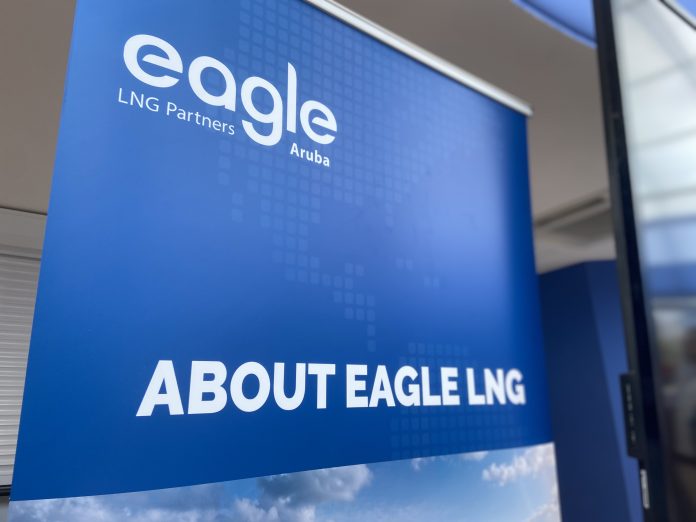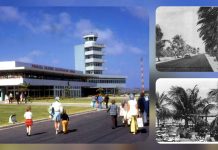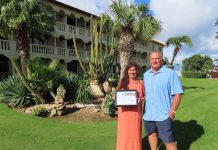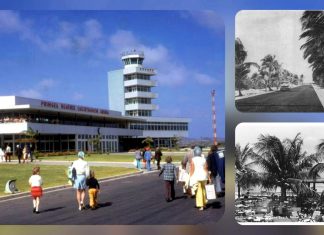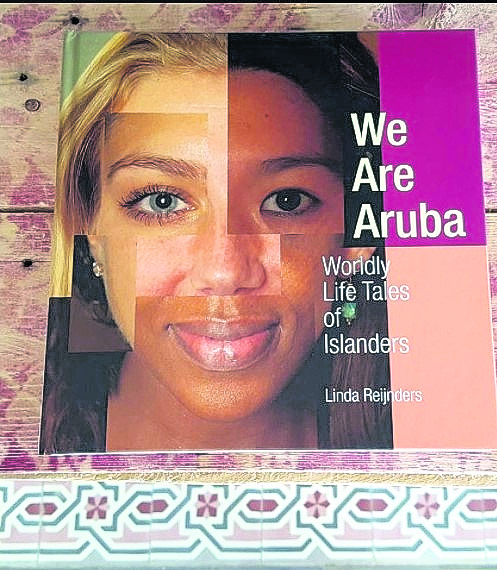Eagle LNG organized three days of information for which they invited the general public to find out more about the project to bring natural gas to Aruba, for the production of electricity. The last information session is today, 6-9pm at MFA Savaneta.
Part of the environmental impact study involves the practice of public meetings with the community in order to know about any doubt or concern regarding the project, so that this can be incorporated in the environmental impact study. Thus these information sessions are part of the agenda.
The goal right know is to replace the use of fuel oil with natural gas. According to Eagle LNG, the big advantage is that natural gas is the cleanest fuel that can be used to generate electricity. The project consists of two components, which within an area in the RDA property the terminal will be constructed to receive the LNG, and then the pipeline will be built to send the natural gas from the terminal at WEB Aruba.
At the session on Wednesday, our reporter noticed that the community had critical questions, among which, what will be the economic impact of this project, tax revenue, jobs, and more. Leopoldo Henriquez, representative for the Royal Netherlands Society of Engineers (KIVI) commented that before an Environmental Impact Assessment can be carried out, a Safety Assessment must be done. Mr. Henriquez highlighted: “It was already brought forward that your engineers are not aware of Risk Analysis and QRA. They lack the information and knowledge, especially in the Netherlands where there are a lot of problems with big disasters and that’s why we know about it. How will you handle this?”
Eagle LNG answered that they are in the process of developing the QRA, and that this will be included in the Environmental Impact Assesment. “We have a lot of experience building LNG terminals. And that’s also the reason why we have Royalhaskoning with us”, Mr. Alejandro Bastardo, Project Manager of Eagle LNG Aruba, commented. Through the international standard required to design the LNG facility and pipeline, it’s mandatory to do a QRA analysis, thus there is no reason to worry, Eagle LNG Aruba emphasizes. “The QRA will surely be included.”
Javier Diaz, Environmental Consultant of Eco Vision NV in Curaçao, explained that they were invited as an independent party to analyze the situation of the flora and fauna in the areas in which the project will be developed. He explained to our reporter that the area for the project is not the only thing they must observe, but must also take into consideration the impact area. “These areas must also be researched to see how you can manage it or adjust the way you construct”, Mr. Diaz said. The system that Eagle LNG has been using is one that was already used in Alaska, and for Aruba, only the scale will change. The blueprint is already made for the area, and the technology is also already there.
“It’s not necessary to wait 20 years for this to come to Aruba, and naturally you don’t do it just like that either.” Here Mr. Diaz refers to the Environmental Impact Assesment, where Eco Vision together with Royalhaskoning (from the Netherlands) is going to look into every aspect, to ‘see if the project can be realized or not’. “And if it can be realized, we must see which advices we must take into consideration when doing it. Right now we are already in this process”, Mr. Diaz says.
It is calculated that by august of september 2022 this will be completed, Mr. Diaz says, adding that Eco Vision has a lot of data, but they don’t want to focus only on flora and fauna and leave other things outside, so in this case, the current situation.
The upcoming works are only for the terminal, because the Pipeline Road still has not been identified. When this is identified, there will be another study on the social components, if it affects people at home, what the impact could be in case of an accident, if it’s in an area with vegetation, etc.
Bastardo told our reporter that people associate LNG with large scale projects. “You must understand that the technology already exists worldwide for all types of scales. What needs to be done to make it affordable for these islands to receive LNG is to do it on the scale of the demand that the country has”, Mr. Bastardo explains. He added that the size of the installation is made on the demand of WEB because it cannot be made any smaller. “This is what allows for it to be competitive, or make it more affordable, and to replace fuel oil”, Mr. Bastardo said.


